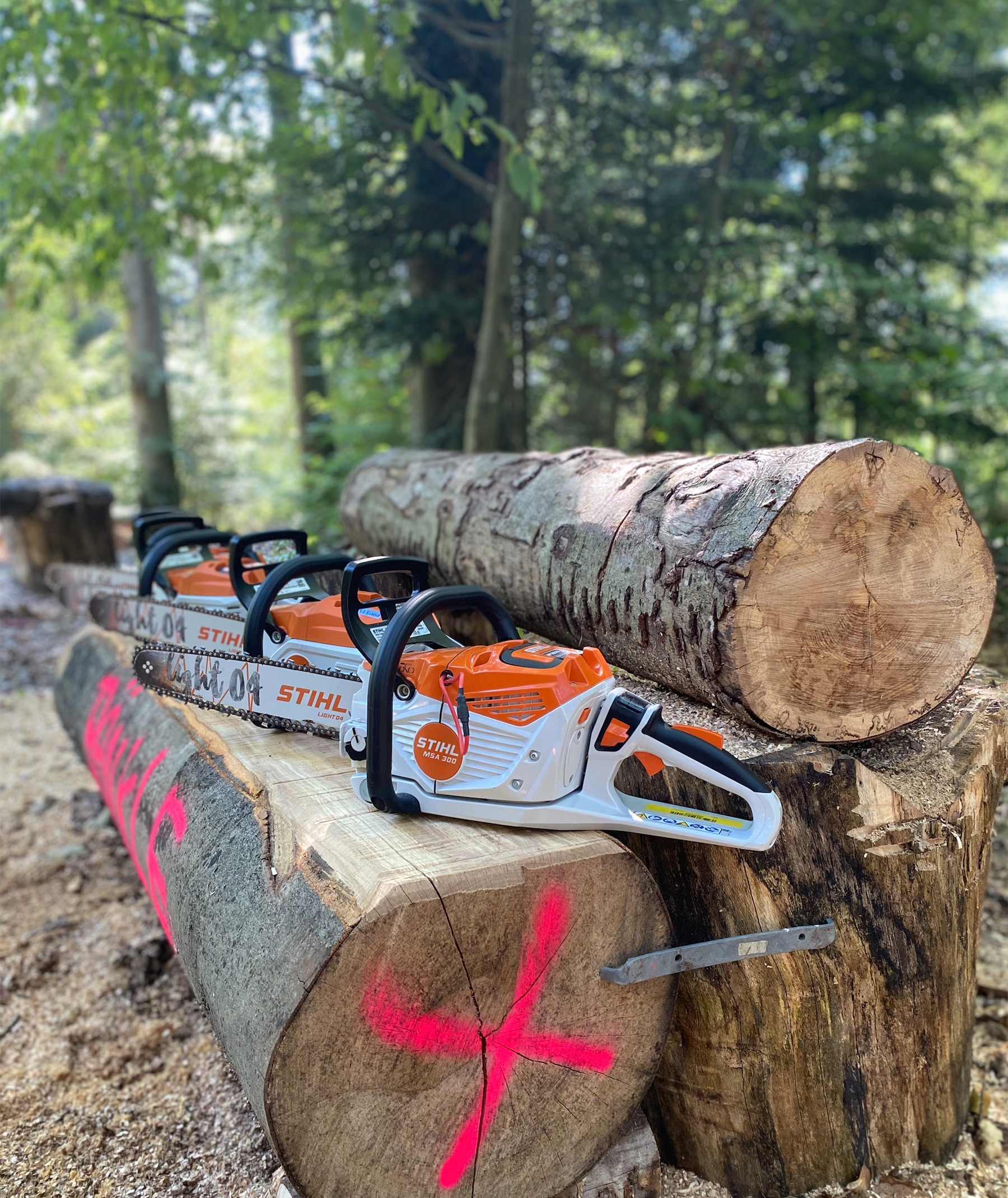The best of both worlds

Hybrid development at STIHL: This means that developers simultaneously occupy the cordless and gasoline worlds. It is an approach which will become increasingly important in the coming years, due to the inevitable technological trend towards cordless power tools. To harness the famous STIHL power to innovate and remain at the forefront of cordless products, more and more employees are working in development in both drive areas. What is it like to live between worlds? Max Ryssel (2/CYC) and Stefan Kaats (2/CYF-ka) provide an insight.
In an ever-changing world, it is becoming increasingly important to be able to adapt quickly to new situations – and this is also the case at STIHL. In their day-to-day work, employees in Development are used to reacting flexibly and quickly to a wide variety of circumstances, so that projects are completed safely and on time. “Hybrid development” means exactly that: Rapid adaptation to the changing project landscape as well as to the technological trend towards cordless devices. Employees who previously worked in the combustion engine sector contribute their many years of experience and expertise to the development of cordless power tools.
As Jochen Eichner (2/CRF), who himself works on development in both the cordless and combustion engine segment, reports, “this offers an advantage both to end customers who know that their quality requirements for STIHL power tools are achieved through pooled expertise, and to employees themselves who can expand their wealth of experience by working in the field of cordless power tool development.” Numerous developers are already working in both worlds. This enables STIHL to react flexibly to external environmental influences and internal strategic decisions.
With a wide range of further training measures, the company supports employees’ entry into cordless power tool development – including in collaboration with Esslingen University of Applied Sciences.
Max Ryssel (2/CYC) and Stefan Kaats (2/CYF-ka) report on their experience from life in the cordless and combustion engine world.

In which areas can the development of cordless products benefit from gasoline-driven technologies?
STEFAN KAATS: In the combustion engine sector, STIHL has decades of expertise in how products are successfully introduced to the market. In addition, the requirements and working methods relating to our gasoline-driven products are very well known and understood. This is precisely what provides a good basis for the design of high-quality consumer and professional products in the cordless sector.
What are the main differences between cordless and combustion engine development?
MAX RYSSEL: Of course, the fundamentals of drive technology and the associated requirements and relationships. System influences and technical cross-effects are significantly more pronounced in combustion engines. If I change something on the engine, this can affect the noise emissions or have further effects on the overall system, for example. Components in the overall system can be more clearly differentiated in cordless power tools. This also makes it easier to use the same components in different products, thereby significantly shortening the development times of cordless products in some cases.
What assets are useful for someone wishing to work in the cordless world?
MAX RYSSEL: When I was starting out, experience in project management, knowledge of power tool and application technology, and a personal network created a good foundation for me. I was also able to reuse my existing specialist knowledge for certain task areas. In addition, the STIHL “Electrical Engineering for Engineers” internal training course, devised in collaboration with Esslingen University of Applied Sciences, supported my entry into the world of cordless power tools. Though it is obviously not a substitute for an entire course of study in electrical engineering.
What are the challenges when moving to cordless product development?
STEFAN KAATS: The biggest challenge when first entering this field is building up technology-specific knowledge. The cordless product obviously has significantly more electronic components and fewer mechanical transmission elements. The technical requirements are also different, for example in the area of environmental influences. This makes it challenging and rewarding in equal measures. In addition to entering a new technological field, there had also been a restructuring of the development organization and we needed to familiarize ourselves with the new framework conditions of the development process.

What are the pros and cons of “hybrid development”?
MAX RYSSEL: STIHL can make profitable use of experienced employees’ expertise in both worlds, and in doing so react flexibly to project and strategy requirements. The knowledge and ideas complement each other in this process. Though the hybrid existence sometimes means less technological depth in product groups due to the increasingly broad spectrum of tasks, you can still position yourself as an all-rounder in development.
How do you manage to do justice to both worlds?
STEFAN KAATS: To work at a high level in both disciplines, it is important to continuously work on and learn from projects using both technologies, both cordless and gasoline-powered products. Transfer of expertise between colleagues and trust in a project’s specialists is increasingly important here.
Why is it important to you to be active in both worlds?
STEFAN KAATS: My personal enthusiasm for two-stroke combustion engines is why it’s important for me to continue to be part of the “gasoline success story” in my job. At the same time, I also see the hybrid role as a personal opportunity to further develop myself and get to know new technologies and ways of working. With cordless products, I am particularly fascinated by the fact that completely different machine behavior can be generated with just a few clicks, by changing the values in the electronics – for example via the performance curve, in which a higher power output can be defined even at low speeds. This makes the machine very powerful even at low speeds. The combination gives me the opportunity to take on exciting and challenging tasks on a daily basis and to grow personally.


